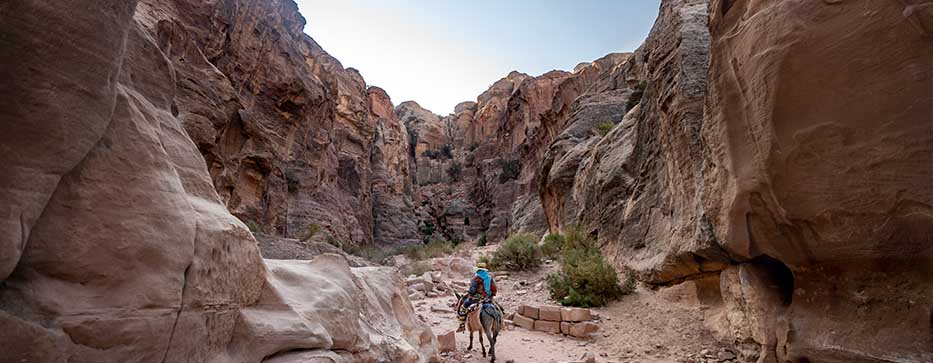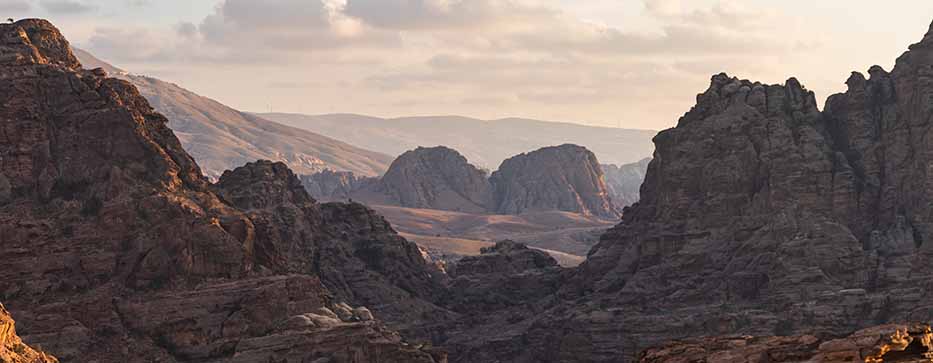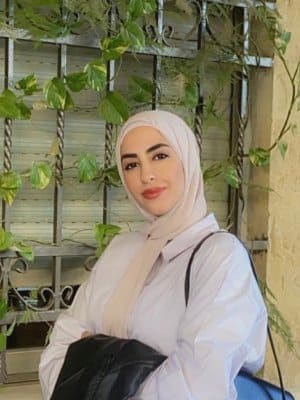Wadi Musa and Petra are inextricably related: the first is the small town that serves as a ‘base camp’ to discover the second, as it is located next to it. Therefore, it is a place of obligatory overnight stay for those who want to discover this wonderful tourist site for more than one day: here are the main hotels, restaurants and places with services for it.
However, on this page we focus on the tourist attractions that are located in Wadi Musa, not in neighboring Petra. Many of them are an interesting complement to the visit of the so-called ‘Pink City’, but others are small surprises that may please certain profiles, especially the most religious and sports travelers.
Wadi Musa, as a population center, has a relatively recent history. But this place would have witnessed important events since ancient times. Specifically, in the thirteenth century BC, with a very important protagonist: the prophet Moses. According to Jewish and Christian belief, in the vicinity of Wadi Musa Moses discovered, miraculously and with a rod, the spring with which he obtained water for his followers. In fact, the very name of this town and the valley, Wadi Musa, literally means “valley of Moses”. However, it is worth remembering that there is another possible location for this episode, also in Jordan, next to Mount Nebo.
From that spring came the water that the Nabataeans channeled to their city, Petra, something that the visitor discovers during his visit, because those channels carved in the rock are still visible.
Much later, Petra in turn led to the modern establishment of Wadi Musa: since the nineteenth century, after the rediscovery of that Nabataean city by Western travelers (1812, Jean Louis Burckhardt), Wadi Musa became the town of service to those who came here, initially explorers and treasure hunters.
At the beginning of the twentieth century, Wadi Musa also had an important role in a chapter of Jordanian history: the Arab Revolt against the Ottomans, whose troops attacked this town in 1917 but suffered a bitter defeat at the hands of the locals, who ended up imposing themselves in the conflict.
Today, Wadi Musa is a small town that lives to the rhythm of Petra, its main source of income. In fact, among its population, which is around 15,000 inhabitants, you can find Bedouins who arrived here from 1985, when Petra was declared a World Heritage Site and the last inhabitants of that place had to leave that historical enclave.

Wadi Musa it is not a particularly monumental place, but if you have considered visiting Petra for several days, here you will find a must-see place to better understand that hidden city carved in the rock. We are talking about the Petra Museum o Petra Museum, opened in 2019 next to the visitor center. It is a small building that, however, has a modern and updated museographic proposal, with audiovisual resources and accessibility solutions so that all visitors can properly interpret the information about Petra.
The collection of the Petra Museum is full of archaeological pieces of enormous value: about 280 in total, recovered in the various archaeological works carried out there. Thanks to them, duly contextualized, the visitor can understand what the way of life of the Nabataean people that Petra gave birth was like, how it was established here, what was its relationship with the new Roman dominators and how it remained hidden from the world since its decline with the fall of that empire. Guided tours are organized and there are also spaces for conferences and other events, as well as a shop with official products.
And if we leave aside the theme of Petra, Wadi Musa It offers another attraction, in this case for those interested in religious tourism: the Spring of Moses, place that gives its name to this town. It is a natural source located on a rock from which water still flows, now protected by a small modern construction with three domes. It is a discreet place that is often visited by pilgrims, especially Jews and Christians. In this small construction souvenirs are also sold.
In addition, there are other entertainment possibilities in Wadi Musa for those who spend several days here. This is the case of the Turkish baths, ideal for relaxing after an exhausting visit to Petra. Some restaurants also offer Cooking classes, where you can learn to cook and taste the delights of the local cuisine. In addition, this town is lively in the late afternoon, after visitors to Petra are dropped by its bars, some of Arab character and others of more international air.

Wadi Musa It is located in the middle of the King’s Highway, which greatly facilitates travel here from other parts of the country. The private vehicle, either in the form of a taxi or rental car, is the most convenient way to access this town. However, you must bear in mind that there are no large car rental offices here, so you will not be able to return it in Wadi Musa if you plan to come that way. These are the distances and durations to consider:
The bus is another feasible option, since it has a stop of the company JETT: the routes directly connect Wadi Musa with Amman (Abdali and 7th Circle) and with Wadi Rum and Aqaba. From these last two cities there are also minibuses, although with a not so exact frequency, since they depart only when they are full.
Being a mainly tourist town, Wadi Musa It is relatively well equipped in terms of information and assistance for travelers. The Petra visitor center (Tourism St.) is the great reference in this regard, with information, maps and other useful resources for those who are going to visit this historic city.
Also, in Wadi Musa There is a tourist police station, which is located in turn in the visitor center complex. That is the place to go if you have complaints or have suffered a mishap during your stay in this town.
Also, at the exit of Wadi Musa, on the King’s Road towards Al Tayyibeh, is the Queen Rania Hospital, which can attend urgently to visitors. It also has a pharmacy to dispense medicines.






Fill out the form below to receive a free non-binding quote tailor-made by a specialized agency in Jordan.
DMC travel agency specializing in tailor-made trips to Jordan
Mandala Tours, S.L, NIF: B51037471
License: C.I.AN-187782-3
Hello!
Contact one of our travel advisors for commercial assistance.
